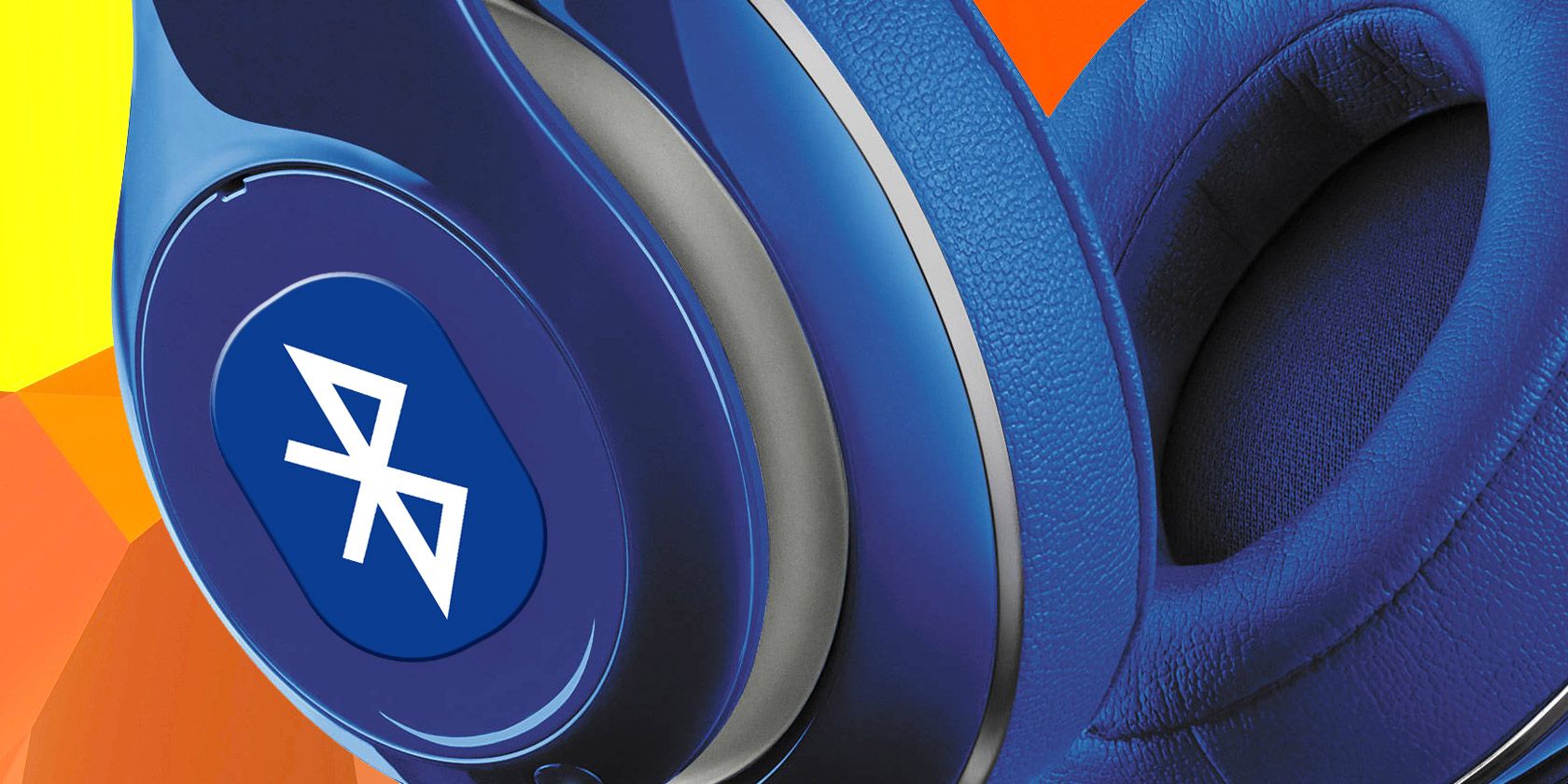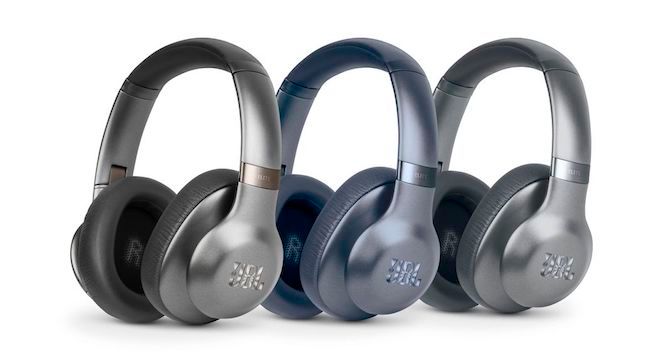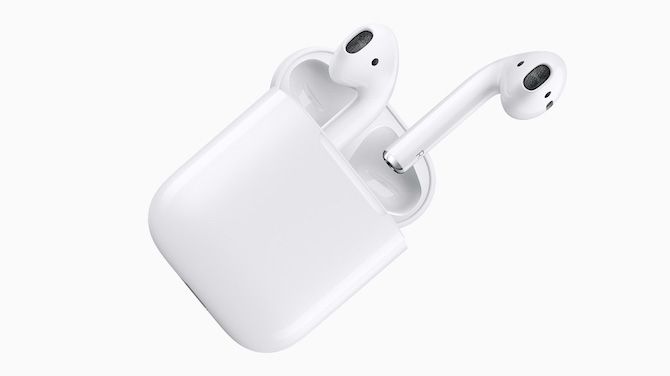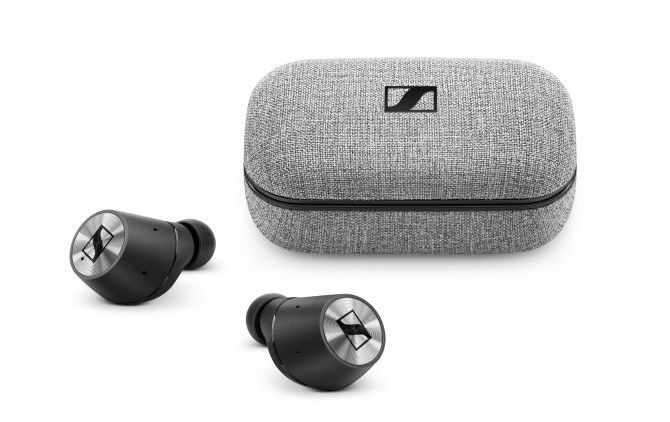Apple removed the headphone jack from the iPhone in 2016. Companies like Google, Motorola, and HTC followed soon after. Suddenly, once-niche wireless headphones were thrust into the mainstream.
Buying Bluetooth headphones can be confusing, though. From sound quality to getting them set up, each model works differently. There's a lot to understand, so let's get started.
1. Types of Wireless in Headphones
When you think of wireless headphones, you likely think of Bluetooth headphones (there are even truly wireless earbuds now). If your phone doesn't have a headphone jack, then Bluetooth is your best option for listening to music.
Your other choice is to use a USB-C headphone dongle. That's a messier solution, and gets worse if you need to charge your phone at the same time.
Bluetooth is convenient because it's supported in all mobile devices, as well as a growing number of other electronics. It has a range of about 32 feet, and is pretty energy-efficient.
It's also improving rapidly thanks to the move to kill off headphone jacks.
There are a couple of other, older wireless headphone technologies still in use. Both are mostly used for TV, and both need a separate transmitter. Infrared is quite rare now, and requires a line of sight connection between the headphones and transmitter.
Radio frequency, as seen in products like the Sennheiser RS120, is more powerful.
It can work at ranges of up to 150 feet, and the signal can pass through walls, so it's usable with a home stereo as well as a TV. However, it's prone to interference and isn't secure in the way that Bluetooth is.
Many modern TVs now offer Bluetooth as standard. If yours doesn't, you can add a Bluetooth transmitter easily enough.
2. Bluetooth and Sound Quality
The sound quality you'll get on your Bluetooth headphones depends on what audio codec they use. The codec is a piece of software that encodes the audio at one end and decodes it at the other. Both your audio player and headphones need to support it.
SBC
Early versions of Bluetooth compressed audio very heavily, producing a harsh, digital sound.
The move to improve quality began with the introduction of the advanced audio distribution profile (A2DP). This enabled streaming of high-quality stereo audio via the SBC codec. It's now effectively the standard.
A 2014 report by SoundExpert, an audio quality testing site, concluded that at its highest possible bitrate of 372Kbps, SBC was comparable to an AAC file encoded at 192Kpbs, and that "most artifacts it produces are beyond human perception." However, it's mostly used at lower bitrates, so isn't always the best quality.
aptX
The next step up is aptX. Most Android devices from the last few years support this codec. It delivers "CD-like" performance, at a bitrate of 352Kbps with lower latency. This uses compressed audio.
aptX HD
Better still is aptX HD, which is the high definition upgrade on the classic aptX formula. It's still compressed, but streams at a much higher bitrate of 576Kbps, and has much lower latency.
A small but growing number of devices support aptX HD, including the Galaxy Note 9, OnePlus 5T, and LG V30. It requires specific hardware, so if your device doesn't support it there's no way to upgrade.
AAC
Apple doesn't support aptX on the iPhone or iPad. Instead, it uses AAC, an enhanced variation on SBC. It uses a lower bitrate (256Kbps), but efficiencies in the codec make it comparable to aptX, if not better. Using AAC-compatible headphones with an AAC source (like Apple Music) also reduces degradation in sound quality.
Latency
We've mentioned latency; this is a major issue with Bluetooth headphones.
Latency is the short delay between an audio signal being sent and when you can hear it. You won't notice it when listening to music, but if you're watching a video or playing a game, it can cause the sound to be out of sync with the picture. That's why you can buy wireless headsets specifically for gaming. If you don't want to spend too much on one of these, you can buy budget gaming headsets for less than $25.
Latency varies depending on the hardware and software setups you have. aptX HD has significantly reduced latency compared to the older codecs. Apple's use of AAC with the Airpods has minimized it to barely perceptible levels.
3. Battery Life for Wireless Headphones
Bluetooth headphones get power from their own built-in rechargeable battery.
Over-ear Bluetooth headphones have space for a large battery, charged via a USB cable. You should look for between 20 and 30 hours of battery life---the JBL Everest, for instance, promises up to 25 hours.
Bluetooth earbuds have shorter battery life. Those that use a cable to connect the two buds can typically offer around eight hours, and charge through a USB cable. True wireless earbuds, where both parts are separate, are good for around three to five hours. They come with their own special charging case. which also keeps the charge topped up when you're not using the buds.
Remember that volume levels affect battery life. The louder your music, the shorter the battery will last. Battery life quotes on manufacturers' spec sheets tend to reflect optimal conditions rather than real-world use.
4. Pairing Bluetooth Headphones
Connecting Bluetooth headphones to a phone or other device can be as quick as plugging them in, or it can be quite frustrating.
The W1 chip in some of Apple's headphones has reduced pairing down to a three-second process. Open the case on the AirPods (or press a button on the side of select Beats headphones), tap an onscreen prompt, and you're done.
Android 6.0 and above offers a similarly quick system called Fast Pair, albeit with limited support from headsets so far.
Some headphones use NFC to speed up pairing. This is a wireless technology that enables devices to communicate by holding them close to one another.
When used in conjunction with an NFC-enabled device---including many Android smartphones but not the iPhone---you can pair the headphones with the device simply by tapping them against it.
If none of this works for you, you have to pair your headphones manually. This involves locating the Bluetooth settings on your device, pressing a button on the headphones, and entering a passcode when prompted (usually 0000). It's slower and more tedious, so you might need to refer to the manual to get it right.
5. Remote Controls for Wireless Headphones
Wired headphones often have a remote on the cable, but Bluetooth headphones don't have this option.
Instead, they build some basic controls, along with a microphone, into one of the earpieces. This may be in the form of buttons or touch sensors. It could also be a button to activate voice controls.
For controlling AirPods, a double tap launches Siri. From there, you use commands like "Turn volume up" or "Skip track" to control your music.
Companies like Bose and Sony make Bluetooth headphones that work in the same way with Google Assistant. Jabra is among those that supports Amazon's Alexa.
The accessibility of the controls is something you should always test when buying, or choosing to keep, new headphones. The button design and layout is sometimes determined more by aesthetics than practicality. They aren't always easy to find by touch alone, especially if you're in the gym.
6. Form Factor and Size
Wireless headphones come in the three standard styles: over-ear, on-ear, and in-ear. The first two look and function much the same as their wired counterparts. But the latter, in-ear, is quite different.
A recent trend in the in-ear format applies to true wireless earbuds. Unlike the earliest models, which had the two buds connected by a cable that would go around the back of your neck, many models now lack wires altogether.
The move began with Apple's AirPods. Now, most manufacturers are on board: Sennheiser, Bose, B&O, Samsung, and more. The Jabra Elite 65t is regarded among the best in-ear earbuds.
These all work on the same principle: they come with a charging case that maximizes your play time. But there are issues, too. Latency can be an problem, so they aren't all ideal for video. Battery life is shorter, at up to five hours. They're more expensive than wired earbuds. And the diminutive size makes them easier to lose.
But you can't beat them for convenience and portability. Price is great too---check out the best wireless headphones under $100.
Bluetooth Headphones Are the Future
Like it or not, headphone jacks are on their way out and Bluetooth headphones are the future.
Audiophiles may resist for a while, but for most of us, wireless is now more than good enough. It's easy to use, affordable, and the quality improves all the time. And if your headphones keep breaking because you roll over the cord, this might be the ideal time to go wireless. Keep in mind that a pair of wireless noise-cancelling headphones can turn out to be the best gadgets to aid your creativity.
If you're ready to take the leap into the world of wireless music, take a look at our guide to the best Bluetooth headphones you can buy right now (or the best Bluetooth headsets specifically for iPhone). If you're bold, you might even want to try bone conducting headphones, which allow you to still hear your surrounding.




